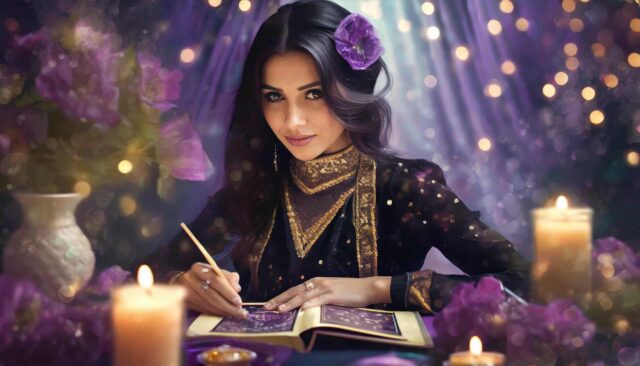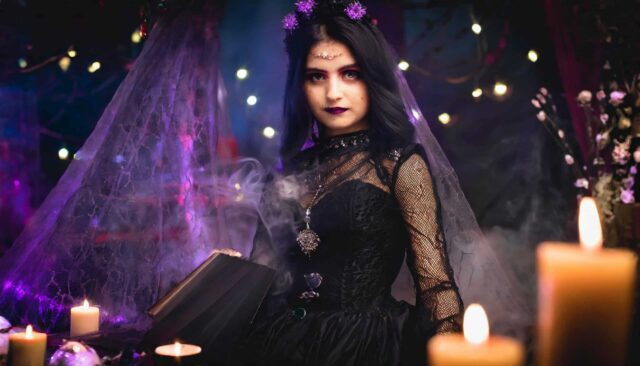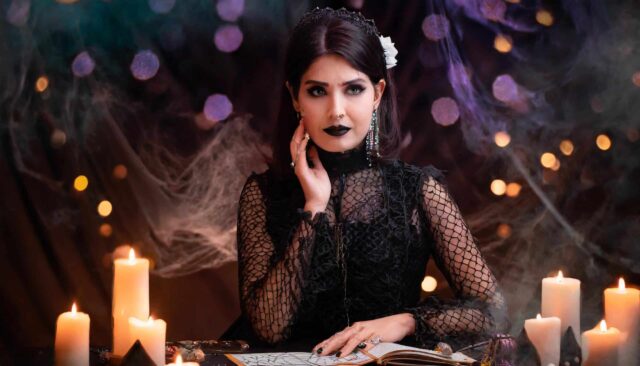Tarot Cards Meaning, Enter and unveil how read tarot cards
with my secret guide, revealing the meaning of tarot cards, how to read tarot cards yourself, …and more!

Here you are,If you have landed here, it is because you are thirsty for adventure in the intriguing universe of tarot. You have thrown your heart into the ocean of predictions, yearning for an expert guide to unlock the secrets of this fascinating world. Or, you’re here with a curious skepticism, ready to challenge fate and discover what fate has reserved for you through the irresistible magic of the cards…
The questions burning inside you that have driven you to this point are probably:
- what is the meaning of tarot cards?
- how do i read tarot cards?
- are the tarot cards reliable? is there a relationship between the tarot, my love, and my immediate future?
Sit back, because we are about to embark on a journey that will change the way you deal with love anxiety, awakening the sensuality hidden in the tangled web of your destiny.
Are you ready to let the magic of tarot unveil your most ardent desires?
Templum Dianae – for more than 10 years online,
chosen by more than 20k Students each month for the study of Holistic wellness!
tarot cards really work ?
Are you tired of uncertainties and wish to unravel the mystery of your love destiny? Well, I will tell you one thing: tarot cards are the secret key to open the doors to your emotional future. You might think they are just cards, but let me tell you that they are much more: they are the path that will lead you to the discovery of your deepest desires.
Tarot: Magic or Reality?
Yes, that’s the question swirling in your mind, “Do tarot cards really work?” The truth is that they are not just a tool for prediction, but a source of power and insight that can unlock the intricate secrets of your heart. If you are tired of lingering anxiety and wish to put your destiny in your own hands, tarot cards are the answer.
You are at a crossroads, and your romantic soul is clamoring for an answer: “Do tarot cards really work?”
Well, let me give you something provocative: tarot cards are not just cards, they are the key to access beyond the veil, a source of power that can unlock the intricate secrets your heart hides.
If you are tired of dancing on the edge of anxiety, of searching for answers in places that seem doomed to silence, then you have found your way out. The tarot is not just an answer, but a bold declaration of independence. It’s time to take destiny into your own hands, to shake off uncertainty and face your love life with courage.
Imagine that you possess the power to look inside yourself, to decipher the secrets that fate hides. Tarot cards are like a secret weapon you can wield to shape the fabric of your love life. No more uncertainty and unnecessary waiting, it’s time to act!
How Do Tarot Cards Work ?

I guess now you must be wondering, “But how on earth do tarot cards really work?”
Well, many limited minds believe they can explain the power of tarot through cold mathematical calculations and soulless science. But let’s take a step back, let rationality be lost for a moment.
Before we sink into the waters of logic and science, there is a realm made up of feelings and sensations, a realm that goes beyond what we can quantify and precedes science itself. This is the realm of emotions, of burning desires and fiery passions; it is the world that connects your mind to the deepest part of your soul, the world of spirituality that envelops everything.
That is why a seemingly inanimate object, such as a simple deck of cards, steeped in the wise symbols of the ancient masters, can turn into a powerful bridge between the secrets of your deepest spiritual self. A link between the higher worlds and the material world, like a kind of channel between what is unseen and what is palpable.
Why can’t everyone read Tarot cards ?
In the eyes of soulless souls, everything seems cold and lifeless. They are barren creatures, devoid of feelings, love and soul, unable to go beyond the surface of matter, and, as a result, cannot see beyond the deck of cards.
But for those who dare to look beyond, here is where the secret world of reading tarot cards reveals itself as if by magic! It is an art that escapes cold minds and embraces those whose hearts beat with passion, ready to connect with the inherent magic that lies within each card. Welcome to the mysterious realm of tarot, where every card is an open door to your destiny.
How Do I Read the Tarot Alone ?
What if I told you that you can master the art of reading tarot cards on your own? It is possible, and now is the time to take charge of your destiny.
Reading tarot on your own is a fascinating art that requires courage, intuition, and a deep connection with your inner self.
1. Preparation: The Key to a Deep Connection
Before immersing yourself in the world of tarot, it is essential to create a ritual space that promotes concentration and spiritual openness. Light a candle, create a relaxing atmosphere, and keep your tarot deck handy. Preparation is the key to opening the doors of intuition.
2. Knowledge of the Cards: Deciphering the Symbolic Language.
Each tarot card has a unique and symbolic meaning. Templum Dianae offers valuable resources, such as courses and books, that will guide you through the meaning of each card. Carefully studying the cards will provide you with the foundation you need to interpret the symbolic language and gain a deeper insight into yourself.
3. Insight: Listen to the Voice of Your Heart.
Reading the tarot is not only about knowledge, but also about listening to your instincts. Give yourself permission to follow your intuition as you explore the cards. Templum Dianae offers customized courses that will help you develop your ability to listen to the voice of your heart, opening the door to a deeper connection with the world of tarot.
4. The Personal Story: Interpreting the Cards in the Context of Your Life.
Each tarot reading is a unique narrative tied to your personal experiences. When interpreting the cards, consider the context of your life and the questions you ask yourself. Templum Dianae provides practical tools for applying the wisdom of the cards to your personal situation.
5. Continuous Practice: Refine Your Skill Over Time.
Like any skill, tarot card reading requires constant practice. Templum Dianae offers you the opportunity to participate in learning communities and advanced courses to hone your skill over time. Be inspired by other enthusiasts and continue to explore the vast world of tarot.
Conclusion: Your Journey of Self-Discovery.
In conclusion, reading tarot solo is an intimate journey of self-discovery and connection with the mysterious order of the universe. Templum Dianae is here to guide you on this fascinating journey, offering valuable resources to approach the art of tarot with confidence and assurance. Take the cards into your own hands and begin this journey of exploration and self-empowerment today. Your destiny is in your hands, ready to be discovered through the magical world of tarot.
Major Arcana and Minor Arcana : the meaning of Tarot cards
If you have ever felt the mysterious call of the Tarot cards, you have probably come across the enigmatic Major and Minor Arcana. The Major and Minor Arcana are the keys to deciphering and interpreting this fascinating symbolic and mysterious language of this ancient divinatory tool.
the meaning of the cards of the Major Arcana
The Major Arcana act as gateways to the universe, introducing you to symbols and archetypes steeped in depth and meaning. The Majesty of the Empress, the Wisdom of the Hermit, and the Strength of the World Arcana guide you through the milestones of life. But each card is a story to be told, a symbol that is revealed only to those who are willing to listen. Want to explore further the wonders of the Major Arcana?
Read more here: the meaning of the Major Arcana
the Minor Arcana
On the other hand, the Minor Arcana delve into the intimate details of your daily existence. The Cups reveal emotions, the Wands explore action and passion, the Swords address logic and conflict, and the Deniers touch on the material sphere. These are the brushes with which to paint your life, card by card.Curious to learn more about the meaning of the Minor Arcana?
Read more here: the meaning of the Minor Arcana
Tarot Books and Courses

Are you ready to fall in love with the wisdom hidden behind the Tarot cards? Templum Dianae is here to offer you the best online training, your passport to a fascinating journey into the sensual and mysterious universe of the Tarot.
Online Tarot Courses
Templum Dianae is the place where the wisdom of the Tarot blends with the power of online training. Are you tired of vague answers to your deepest questions? Here you’ll find courses that challenge the ordinary, guiding you through the mysterious journey of self-discovery in a style Dan Kennedy himself would approve of.
Learn more about the courses at Templum Dianae .
Books on the Tarot and Ancient Magick Grimoires
If you love to get lost in the pages of a good book, Templum Dianae has selected the best. Discover the secrets hidden between the lines of compelling books, where each page is one step closer to understanding the cards that await you.
Choose your favorite reading from my top Grimoires and Books
Free Tarot Online
Templum Dianae’s free online resources are your taste of the divine. Engaging articles, detailed guides, and captivating videos await you, ready to illuminate the path of your questions without asking for anything in return.
Begin your exploration of all my articles here
Free Tarot Online
Dear explorer of love mystery, it’s time to discard anxiety and embrace the power of the cards. In my online realm, your secret haven for the universe’s answers, I present the sensual antidote to your love questions: the Free Tarot Online. In my virtual realm, where the cards speak the language of love and destiny, I present to you a sensual divination experience. Discover how the 3-Card Reading and the Yes or No Tarot can be your perfect companion to solve the riddle of your heart.
The 3-Card Reading: A Taste of Your Destiny
Have you ever wanted a quick glimpse of your destiny without having to consult an oracle? The 3-Card Reading is your ticket to a quick and powerful predictive journey. No more lingering, just direct answers to your darkest questions. It will be like opening a window into the soul of your future.
Try the 3 Card Reading here : 3 Card Reading
Tarot Yes or No: The Unfiltered Answer
What if you want immediate answers to your most pressing questions? The Yes or No Tarot is the missing link between you and the truth. No frills, just answers as clear as crystal. Be ready to unravel the mysteries of your heart with a simple click.
Try the Tarot Yes or No here: tarot yes or no
Tarot Cards Meaning
And so, we explored together the deeper meaning of the Tarot, probing the mysteries of the soul and letting the cards paint our destinies.
We asked with romantic impetus, “Are the Tarot Meanings more than just cards?” The answer, whispered between the folds of destiny, is a vibrant “yes,” as each card is a key to understanding our intimate labyrinth of emotions.
In our journey, we revealed the “How to Read the Cards Alone,” a daring art that allows you to dance with destiny without the shadow of intermediaries. The cards have been your intimate companion on this journey of self-discovery.
The “Major and Minor Arcana” have guided us through universal and everyday stories, creating a tableau vivant of meaning that reflects our unique journey.
For those who thirst to deepen their connection with mystery, we opened the doors to “Tarot Books and Courses,” offering the key to unlocking the potential hidden in the pages of ancient wisdom.
And finally, we touched the stars with “Free Tarot Online,” opening a virtual window to clarity and intrigue, making the meaning of the cards accessible at the click of a button.
My dear, this is not a conclusion, but an invitation to stay in touch with Templum Dianae. Our realm of wisdom and mystery is ready to welcome you always. Stay fascinated, dear explorer of secrets, and keep dancing through the cards of life.
Fate has never stopped weaving your story, and the cards are ready to reveal each new chapter.